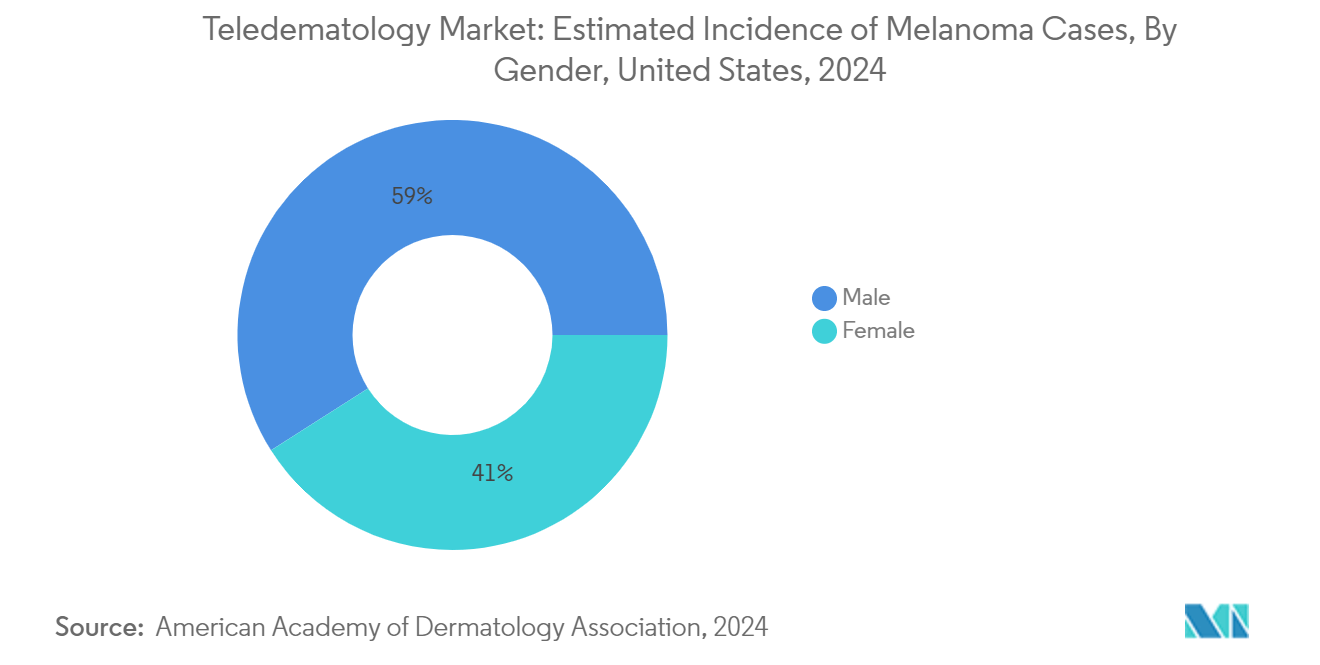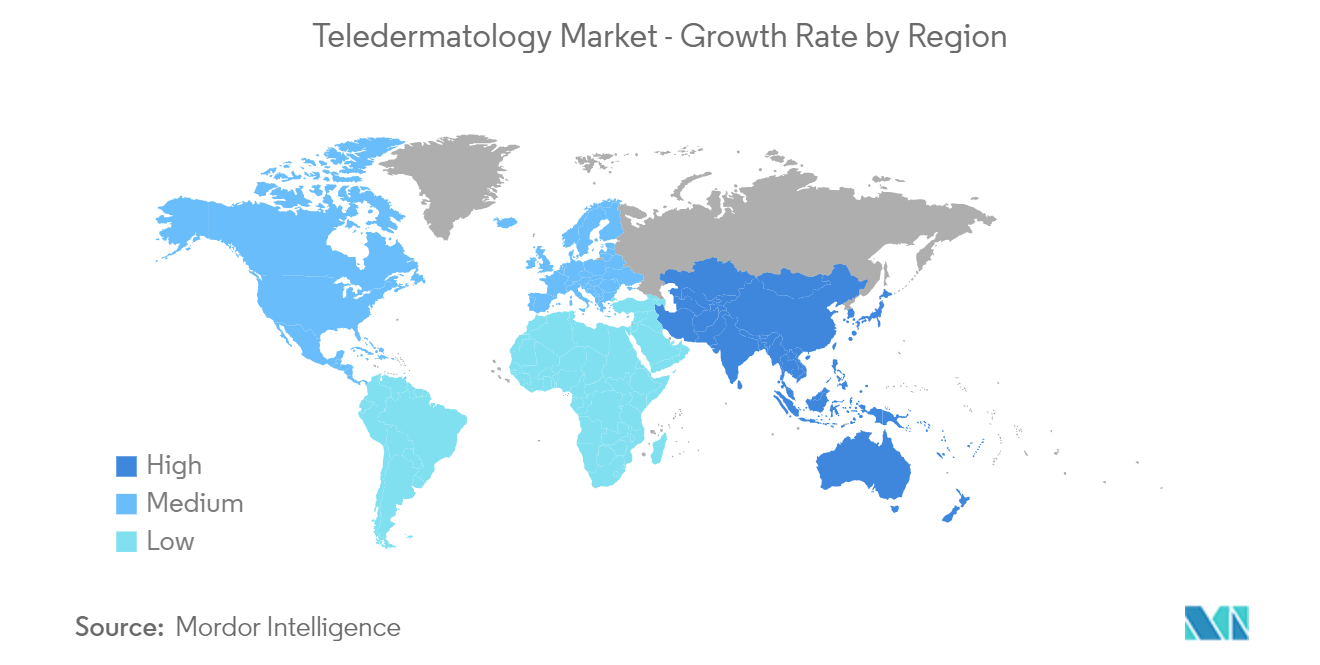Market Trends of Teledermatology Industry
The Services Segment is Expected to Have Significant Growth in the Market Between 2024 and 2029
Teledermatology offers various services, such as teleconsultation, telemonitoring, and tele-education. It provides numerous benefits such as convenience, access to specialized care, reduced healthcare costs, improved health outcomes, and increased patient engagement. These benefits are surging the adoption of teledermatology services over traditional in-person visits to cater to the increasing demand for dermatology care, which favors segment growth between 2024 and 2029. For instance, according to a report published by News-Medical.Net in October 2023, Consultant Connect’s PhotoSAF technology is one of the United Kingdom’s most widely used teledermatology platforms, covering over half of the NHS across England, Scotland, and Wales. After the launch of the Consultant Connect platform, its usage increased by 2,400% in 2023 compared to the previous four years. Hence, such instances support the idea that teledermatology services enhance patient experience and improve health outcomes, allowing them to drive segmental growth from 2024 to 2029.
Moreover, telemedicine has emerged as an essential tool in cases where diagnoses and treatment are straightforward, such as acne, hair disorders, and dermatitis. For instance, according to a study published by the Telemedicine and e-health Journal in October 2023, the most frequent reason for patients using teledermatology in Germany was high waiting time to avail dermatology care in the outpatient department. Furthermore, as per the same source, 62.0% of the enrolled patients rated the treatment success as good or very good, whereas 86.1% rated the quality of telemedical care as equivalent or better to that of an outpatient visit. Additionally, the study published by the Life Journal in April 2023 stated that the accuracy of atopic dermatitis diagnosis through telemedicine service was 84.4%. Such studies highlighted that as more patients and healthcare providers become familiar with telemedicine, it is likely that teledermatology services will continue to expand in the upcoming years.
Additionally, active investments made by market players to increase awareness about skin diseases and outreach to dermatology care are contributing to segmental growth. For instance, in March 2024, the Health Science Department of Dermatology of George Washington University School of Medicine received a USD 500,000 sponsorship from Johnson & Johnson Innovative Medicine for its free teledermatology program, EACH one TEACH one. The programs aim to enhance access to dermatology care across the country. Such initiatives increase the accessibility and affordability of dermatological care, driving the demand for teledermatology and contributing to segment growth from 2024 to 2029.

North America is Expected to Hold a Significant Share in the Market Between 2024 and 2029
North America is expected to have a significant share in the market owing to factors such as the increasing burden of skin disease, with rapid acceptance and penetration of telehealth by healthcare facilities contributing to the segment growth over the study period. In addition, a strong presence of established players offering a wide range of solutions and access to developed healthcare infrastructure is anticipated to drive market growth across the region. For instance, according to a study published by JMIR Dermatology in August 2023, teledermatology was widely accepted in North America, followed by Europe, compared to other regions with poor geographical distributions of doctors, which appear to be underrepresented. Several studies reveal high levels of user satisfaction in teledermatology over the last two years across this region.
Furthermore, the market is driven by increased funding from government and non-government organizations to raise awareness and accessibility related to skin diseases. For instance, in December 2023, the Skin Investigation Network of Canada received USD 2 million from the Canadian Institutes of Health Research over five years to tackle the causes, clinical aspects, health systems, and population health questions for a broad range of skin conditions across the country. Hence, these initiatives increase the adoption of teledermatology, thus contributing to market growth.
Additionally, several prominent players in the market are focused on expanding their geographical presence, which in turn is projected to create numerous growth opportunities for the market, thereby influencing market growth in the region. For instance, in April 2023, MedX Health, a key player in teledermatology, agreed with PharmaChoice Canada to launch the MedX teledermatology screening platform across Canada. Such strategic initiatives by key players contribute to market growth. Therefore, the studied market is anticipated to grow in North America due to the growing acceptance and penetration of telehealth platforms for diagnosing and treating a wide range of dermatological conditions.


